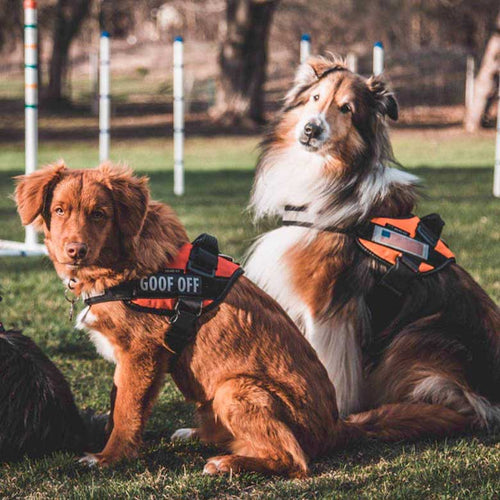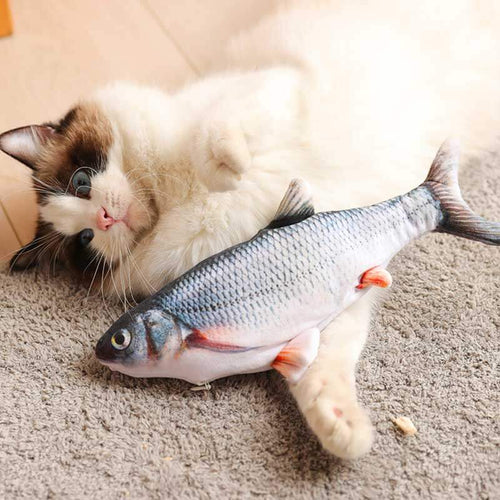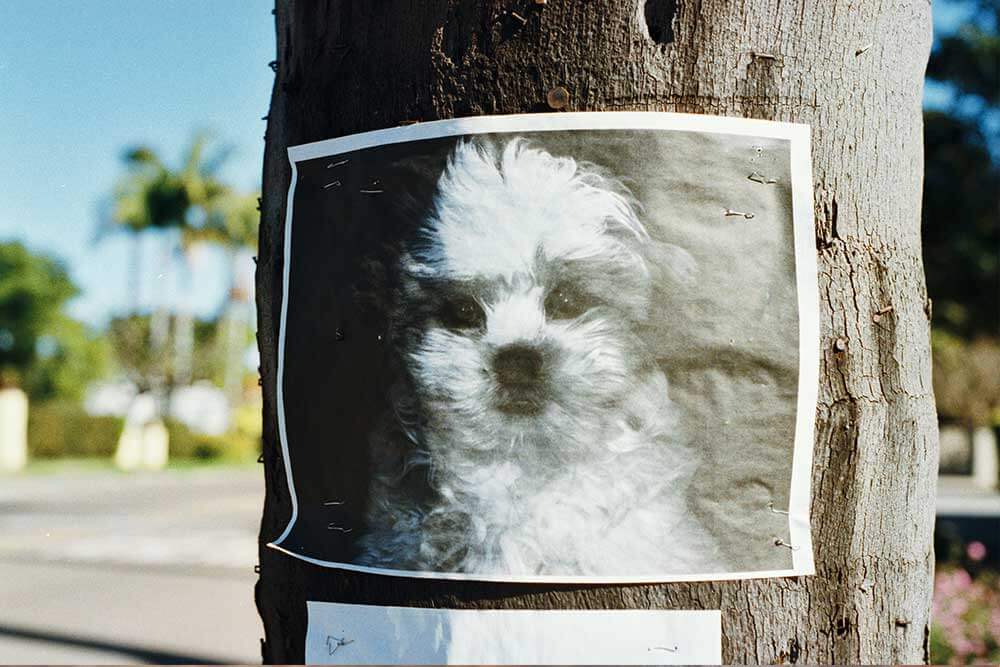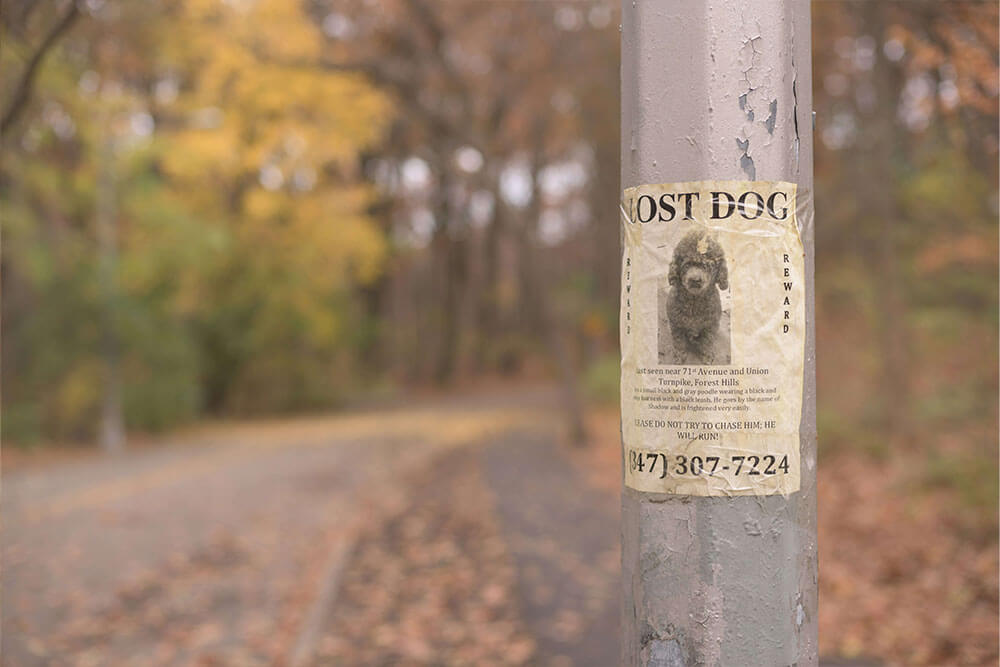The Sphynx cat is a medium- to large-sized cat with a muscular and strong body without fur. Its ears are large, more pronounced than its head, and are open and erect, resembling the ears of a bat. The eyes of the Sphinx are round or lemon-shaped, with a large proportion of the face, making them very cute; pupil color varies widely, from yellow, green, blue, odd eyes, to white-gold. The pupil color is known when the kittens are young and will not change throughout their lives, but kittens from the same litter will have different pupil color expressions. At the same time, the broad and prominent forehead of the Sphinx Hairless Cat makes this breed look easy-going and curious. The Sphinx Hairless Cat (hereinafter referred to as Hairless Cat) is docile, non-aggressive, bold and curious, and good at getting along with other dogs and cats.
Table of content
Sphynx Cat Colors
Hairless cats can have different body color expressions, mainly divided into blue (fancy) and white. The blue and white cats are also two directions that many breeders breed for, hoping to make the genes more and more stable through preferential selection.
white sphynx cat
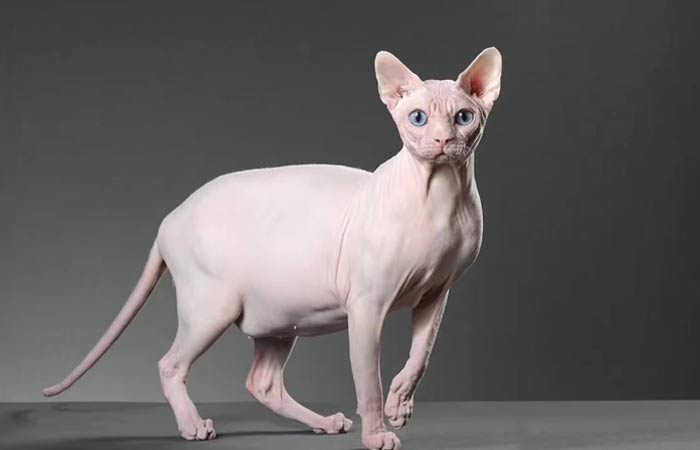
blue sphynx cat
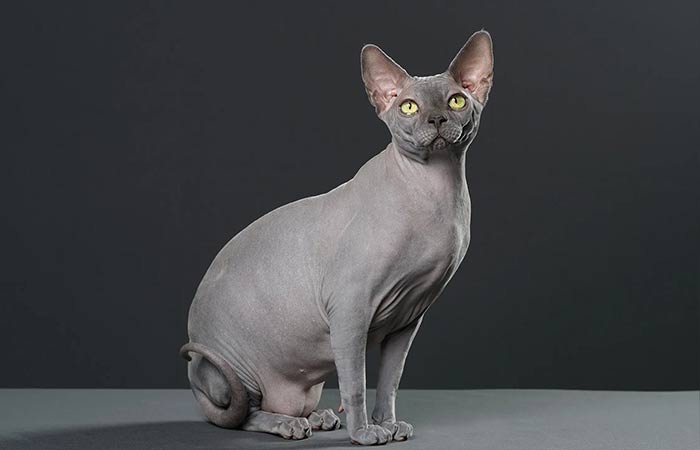
History And Origins Of The Sphynx
What Breeds Make A Sphynx Cat?
The Sphinx cat is also known as the Sphinx hairless cat. This hairless cat has been recorded as having been bred by the indigenous people of Mexico in South America as far back as 1700. The TlCA recognized the breed and the cat was recognized as a rare breed in 2005.
The first documented hairless cats were brothers born in the same litter named Nellie and Dick, who were purchased from Native American Indians in Pueblo in 1903 by New Mexican American Sinek, and rediscovered in Toronto, Canada in 1966, giving the Canadian hairless cat its name. Shortly thereafter, hairless cats were also found in Minnesota, USA. As the fame of hairless cats grew, there were reports of hairless cats being found all over the world. As a result, some cat lovers bred Sphinx cats, which are not susceptible to genetic diseases and are not disabled by inbreeding.
Purebred Sphynx Cats
Sphynx cats are covered with sparse hair, and their faces, muzzles, and noses are covered with a layer of visible body hair; the length of the hairless cat's whiskers is one of the criteria for determining its pure blood. The presence of very short whiskers, or crystal whiskers, or no whiskers at all, around the muzzle of a hairless cat is a good sign. If there are crystal whiskers, they will be more sparse compared to the average cat.
Note that the above three conditions do not conclusively determine whether a particular cat is pureblood or not, but if it exhibits longer or even fairly long whiskers, it is considered a disqualification.

The Sphynx cat's upper and lower lips are called the muzzle, and a large and full muzzle is a very beautiful sign. Hairless cats have a very strong appetite and are often able to eat with a full belly, which is a normal performance. With a high metabolism and a large amount of exercise, adequate food and protein are one of the secrets to maintain good health.
Sphynx cats are covered with a thin layer of fleece that is not easily perceived by the naked eye. In different environmental temperatures, the density, length, presence or absence of fleece on the hairless body will change. To the touch, the skin of the hairless cat feels more like a small suede and is very soft and gentle. Another characteristic of hairless cats is the folds on the skin. There are layers of folds around the shoulders, between the ears, on the sides of the cheeks, and at the bend of the front and back legs.
These folds are not only found on hairless cats, but also on other breeds of cats, but the hairlessness is very obvious and the degree of folds is closely related to the beauty of the hairlessness.
Health And Care
In breeding, the Sphynx cat is a highly active cat that is very athletic and social, with great climbing and jumping abilities, and in a free-range environment they can also climb doors and bookshelves and jump back and forth to high places like monkeys. Hairless cats are not as soft as they appear, with a strong constitution, strong appetite, and high acceptance of mostly protein foods, making them the best of the breed.
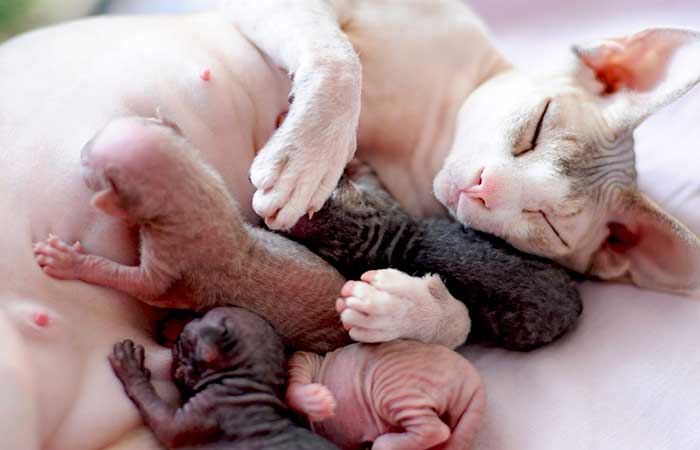
Sphynx Cat Personality
Sphynx cats have a gentle and curious personality, seeing anything unknown and coming forward to sniff and sense each other, even if the other is an adult Golden Retriever. Their curious and bold personality makes it one of the few breeds that can be signed out for cat walking. (This is true of Hairless, Ragdoll, and Leopard Cat, but not recommended for outside)
Most Sphynx cats are very loving of their owners, oh no, very loving of their pooper scoopers. They love to cling to their owners, jump on their laps, or stand on their shoulders or lie in their arms. Sphynx cat is a highly intelligent breed of cat that loves attention, but has an extraordinarily gentle way of drawing you to it, which is why the author is fascinated by them.
Sphynx cats and other cats, even dogs, get along well and can adapt to each other fairly quickly; maybe you just get a Labrador in and after a few hours Hairless will adapt to each other, and that adaptation is not tolerance (cats usually tolerate dogs, but will still hiss and hiss when they get too close), but Hairless is very quick to accept each other and can relax with each other. For small dogs, or small babys, they can show great tolerance.
Their friendly, curious and bold personality with a little humor makes it a favorite of many. In the author's opinion, the Sphynx cat is an excellent companion cat. Plus the they purr, a bit like Garfield, is often milky from its seemingly stocky body.

Grooming A Sphynx Cat
Although Sphynx cats are not covered with hair, they will secrete oil on their body surface to keep their body healthy, which can also stop bacteria and keep their body clean. Of course, due to the accumulation of oil secretion, it is best to maintain the habit of frequent bathing or wiping, otherwise it is easy to see a puddle of cat-shaped oil stains on the bed of the pooper scooper.
Hairless is one of the few cat breeds that are very receptive to water (bathing). Most hairless can stay in a relaxed state in the bath and slightly tense in the shower due to the sound of the water, but can also accept and relax very quickly.
Unlike those cats that scream when they see water, Hairless seems very simple and unpretentious.
On the other hand, because hairless skin lacks fur, it tends to be exposed to a small amount of sunlight or soft diffused light; direct sunlight is a no-no for hairless cats, which can lead to rashes, inflammation, and even burns, which is one of the reasons why it is not recommended to walk cats outside.
Like any other cat, it's important to keep an eye on the condition of the ears and paws – being hairless makes it easier! If your cat rarely goes out, it will be necessary to trim its claws using suitable nail clippers.

- Baby hairless cats, which have many folds on their bodies at this time, will have fewer folds on their backs as they become adults.
For some people with cat hair allergies, the Sphynx cat is the little angel in their lives. They hardly ever cause cat hair allergies, no cat hair on beds, clothes, or food. Few people will know you have a cat in your home if you don't tell them. Sphynx cats have very little body hair, rarely shed, and are hypoallergenic for allergy sufferers, while not causing rhinitis due to fluttering cat hair.
For some people who are allergic to cat hair, the Sphinx Hairless Cat is perfect for them.
It should be mentioned here that very few people are allergic to cat oil, and this allergy is triggered by a protein called Fel d1, not cat hair. Fel d1 is a protein found primarily in cat saliva and sebaceous glands, but of course, the number of allergies worldwide is extremely small, but it is still recommended that owners check their allergens before choosing a Sphynx cat.

Keeping Sphynx Cats Healthy
Sphynx cats should be kept at a temperature of 22-28°. 25-28° is a very active state. If it is below 22° or even 20°, it means the cat will feel a little cold, and some individuals will grow tails, coats on their hands and feet at this temperature. If it is below 16,17°, the hairless cat will be in a poor state, manifesting itself as immobility, looking for a warm place to rely on, poor digestion of the intestines, decreased appetite, etc. In general, it is recommended to dress hairless cats in spring and autumn, not only to protect them from the wind and keep them warm, but also as a way to absorb grease and keep the home tidy, and the clothes need to be changed and taken care of.
Sphynx cats have more ear wax than most long-haired domestic cats because there is almost no hair in their ears, so it is easier to accumulate ear wax and sebum. It is recommended to clean them once a week, and the grease will also mix with dirt to cover the nails of hairless cats, so remember to clean the ear canal and nails when bathing to get a clean hairless cat.
Sphynx cats’ skin folds will also accumulate grease, when the cat stretches its body, you will see a brown trace, that is the hairless cat's body surface grease, you can use a warm towel to wipe off.
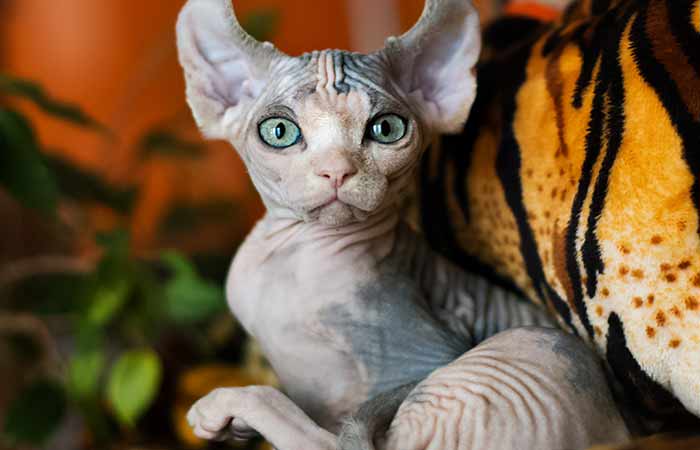
- Hairless cats are also bred for this type of expression, called "elfin", and also for dwarfism (short legs), but it is not recommended and the breeding method can lead to more genetic diseases.
Common Health Problems
There are cases of the hereditary disease hypertrophic cardiomyopathy (HCM) in the Sphynx cat breed.
A high percentage of heart disease is seen in cases of disordered breeding. Breeding cats with genetic defects, or cats with poor fitness, or close relatives, can lead to the development of HCM. Whether it is HCM or mitral valve dysplasia, research data show that hairless cats with HCM have a shorter life cycle and that the onset of disease is often found in cats with an average age of 2.62 years.

The Diet Of The Sphynx
The Sphynx cat needs to eat more than other cats: because of its nudity, its body temperature is higher, so it burns calories more quickly. Most breeders and owners choose and recommend giving them kibble at will, however, if you opt for a daily ration system you will have to take care to respect its ogre appetite. Some brands offer "Special Sphynx" food ranges to meet the nutritional needs of these cats with such a particular body. If their basic cost may seem expensive, they are very caloric products allowing to reduce the consumption that the Sphynx would have with standard kibbles and thus to maintain a more reasonable rate.

Breeding Information
Breeders in Europe and North America used to breed by pairing normal breeds with hairless cats to produce Sphinxes with coats, and then breed through several generations to get hairless cats without coats again, in this way getting high-quality kittens with healthier bodies and a broader gene pool to maintain the continuity of the breed.
Caution: Interbreeding with Devon cats will result in a serious genetic disorder, a form of myotonic dystrophy associated with alpha-glutamic acid lysine deficiency. Normally hairless breeding should be rigorous and scientific.
Price Of A Sphynx Kitten
The price of a Sphynx kitten will depend on the sex, the pedigree of the parents, compliance with breed standards, etc.
- Price of a male Sphynx: $1000 to $3000
- Price of a female Sphynx: $800 to $3000
Summary Of Sphynx Cat Facts
- Pedigree: The result of natural genetic mutation in a domestic cat with a regular coat
- Breed Size: normal
- Weight: 3.5kg to 7kg
- Body Type: Long and slender limbs, slender bones, hind limbs longer than forelimbs, Well-muscled
- Coat Length: very short where present, peach-like fuzz
- Skin Texture: wrinkled but soft, similar to chamois
- Color: black, white, purple, blue
- Face: Angular head, wide and wedge-shaped, prominent cheekbones, thin cheeks, square triangular face
- Ears: Large and erect, towering above the head, with rounded tips and a slight forward tilt.
- Eyes: Large, lemon-shaped, slightly slanted, mostly blue and golden yellow; Upper corner of the eyes slanting toward the ear with wide spacing
- Tail: The tail is as thin and long as a mouse and curves up like a long whip
- Temperament: very friendly and social, lively and active, devoted and loyal. Gets along with dogs, most other pets and strangers.
- Health Conditions: generally healthy but prone to some hereditary conditions; cutaneous mastocytosis, hereditary myopathy, hypertrophic cardiomyopathy, mitral valve dysplasia, periodon¬tal disease, respiratory infection, skin problems, and urticaria pigmentosa.
- Lifespan: wide range, average 8 to 14 years
Product Recommendations
